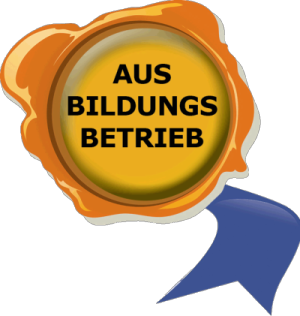History of the Building Maintenance Trade
The Building Maintenance Trade has roots that go all the way back to the 17th Century. After the Thirty Years' War in northern Germany, “wall and carriage washers“ moved into the cities with brush and broom to clean the facades of buildings.
The modern building maintenance sector did not develop from these "carriage washers", nor from those employed in the classic tradition of "service personnel". Rather, the emergence of the Building Maintenance Trade has much closer links to the industrial revolution.
In 1861, Ernest Solvay, a chemist and entrepreneur devised a cost effective method for the production of glass. This made glass an attractive building material to a wide section of the population. This created the necessary pre-condition for the commercial glass cleaning trade. Still in the 19th Century, the glass cleaning industry developed into the building cleaning trade. Up until 1953, this trade was still called the "Glass and Building Cleaning Industry", although the addition of "Cleaning" was added in the 20ths of the last century.
In 1887, the Frenchman Marius Moussy started the "French Cleaning Institute" in Berlin. The company dealt exclusively with glass cleaning. Moussy´s former employees started their own businesses in other cities soon and founded further other cleaning institutes.
Ever since the glass cleaning industry has grown steadily.
In 1888 the first facade cleaning with the aid of a mechanical driving stair was carried out in Frankfurt am Main.
In 1901 enterpreneurs founded a professional organization, the "Association of Cleaning Institute Entrepreneurs in Germany". The initiator was Ernst Kelterborn who published the first journal "International Journal of Central Institutes for Cleaning and Related Businesses" in April 1901. In the charter the Association planned the creation of "districts and local groups" - a forerunner of the country's guild associations and guilds. Individual entrepreneurs called for recognition of the cleaning activities as a trade.
From 1914 - 1918 almost all male workers in the cleaning industry were conscripted either into the army or to work in defense industry key enterprises. Women took their place in the role of managers and glass cleaners. During war, the association’s activities ceased.
In 1920 the "Association of Cleaning Institute Entrepreneurs in Southern Germany" was founded in the Southwest and the "West German Cleaning Business Association" in the West. In Hannover the first Guild for the glass cleaner industry was founded. Until the beginning of the "Third Reich" additional Guilds were formed.
In 1928 the entrepreneur Clemens Small published the first reference book for the building cleaning industry.
In 1929 the "Reich Association of Glass and Building Cleaning Guilds" was founded. The association consisted of six regional associations. Düsseldorf’s cleaning businessman Clemens Small was elected as Chairman.
On 30th January 1933 the Nazis took over. They re-organised the Crafts by introducing compulsory guilds. In this way every craftsman was obliged to join a guild.
On 30th June 1934 the government published a list of trade businesses. The cleaners were listed as well and thus recognized as a trade throughout the Reich. The guilds were "brought into line" that is, that the Board had to be composed of a majority of NSDAP members (National Socialist German Workers' Party).
The National Association of the Glass and Building Cleaning guilds was dissolved after the trade was recognized (1934). Since then ensuring that there are young trainees has been taken care of by education.
The Second World War was a major setback for the glass and building cleaning trade. As in the previous war, male workers were called to arms or to provide their services in defense industry key enterprises. Other than during the First World War, it was forbidden for women to replace their male counterparts for cleaning work on public roads. Through the destruction of numerous buildings, many companies could not sustain their activities during the war.
With the establishment of two German states after Second World War, the development of the building trades varied greatly in the GDR and the FRG. While companies benefited from the economic boom in West Germany (BRD), private companies in East Germany (GDR) could barely grow due to the restrictive tax laws.
Development in the GDR
In 1946 all trade organizations were banned in the Soviet occupation zone with the exception of the Chamber of Trades.
In 1956 the first cooperative was established in Berlin called the “Neat Freak”. At the same time an additional state held company was created with the most profitable service being industrial cleaning.
In 1958 private enterprises were removed from the guild. Private companies were subject to very tight tax controls. This made a continuation of businesses employing more than three employees impossible. These regulations were remained in place until reunification.
Development in the FRG
In 1946 the reconstruction of professional craft organizations in the British zone commenced and included Industrial Cleaning trade.
In 1950 the "Central Guild Association of the Glass and Industrial Maintenance Trade" was founded.
In 1953 the industrial cleaning trade was recognized in the new craft regulations of 09.17.1953 as the 99th trade and is listed in Annex A. The Central Guild Association was renamed into the “Professional Association for Industrial-trades”.
In 1973 a new vocational training regulation for the industrial cleaning trade was decided upon with a training period of 2.5 years.
In 1988 the new Industrial Cleaning Masters Regulation was issued and regulated the profession and outlining the audit requirements comprising both the practical and the theoretical part of the master's examination for the industrial cleaning industry.
Development after reunification
After the reunification in 1990, the first guilds were established in the new Federal States of Germany (former East Germany). Since 1999 the apprenticeship is three years long. The new regulation on Vocational training for industrial cleaners of September 1, 1999 replaces the old ordinance of 1973.
In the new craft Decree of January 2004 the industrial cleaning trade was introduced in the new Annex B1 of the license-free crafts being craft no. 33.
Approximately 2600 businesses in Germany, some of which have already existed for more than 100 years have joined together to form guilds. Since the amendment of the Craft Code no qualification is required to start a business as an industrial cleaner. As a direct result there was an increase in the number of businesses from 7000 in 2003 to 35636 as of June 30, 2010. The guilds consider it their responsibility to counteract this development and to strengthen the reputation of the industry cleaning craft by providing professional services.




